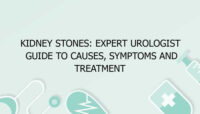Tuberculosis in Children: Symptoms, Causes, and Treatment
Tuberculosis (TB) is a serious infectious disease caused by the bacterium Mycobacterium tuberculosis. It primarily affects the lungs but can also involve other parts of the body. Tuberculosis in children is a significant health concern, particularly in areas with high TB prevalence. This comprehensive article explores the symptoms, causes, and treatment of tuberculosis in children, highlighting the importance of early detection and effective management.
Understanding Tuberculosis in Children
Tuberculosis in children presents unique challenges due to differences in the disease’s manifestation compared to adults. While TB primarily affects adults, children can also contract the disease, often with varying symptoms and complications. The disease can be categorized into latent TB infection (LTBI) and active TB disease.
Latent Tuberculosis Infection (LTBI):
- Definition: LTBI occurs when a child has been exposed to the TB bacteria but does not have an active infection. The bacteria remain inactive in the body and do not cause symptoms. However, LTBI can progress to active TB disease if not treated.
- Detection: LTBI is typically detected through skin tests or blood tests. These tests indicate exposure to TB bacteria but do not confirm active disease.
Active Tuberculosis Disease:
- Definition: Active TB disease occurs when the bacteria multiply and cause symptoms. It can affect the lungs (pulmonary TB) or other parts of the body (extrapulmonary TB). Active TB is contagious and requires prompt treatment.
- Types of Active TB:
- Pulmonary TB: Affects the lungs and is the most common form in children.
- Extrapulmonary TB: Affects other organs, such as the lymph nodes, kidneys, bones, or the central nervous system.
Symptoms of Tuberculosis in Children
The symptoms of tuberculosis in children can vary based on the type and severity of the infection. Recognizing these symptoms early is crucial for effective treatment and preventing complications.
1. Symptoms of Pulmonary TB:
- Persistent Cough: One of the hallmark symptoms of pulmonary TB is a cough that lasts for more than three weeks. The cough may be dry or produce sputum, which can sometimes be blood-stained.
- Fever: Children with TB often experience a low-grade fever that persists over time. This fever can be intermittent or constant.
- Night Sweats: Night sweats, characterized by excessive sweating during sleep, are common in children with active TB.
- Weight Loss: Significant weight loss or failure to gain weight is a common symptom of TB in children. This can be accompanied by a loss of appetite.
- Fatigue: General fatigue and weakness are frequent symptoms, making children appear more lethargic and less active than usual.
2. Symptoms of Extrapulmonary TB:
- Lymphadenopathy: Enlarged lymph nodes, particularly in the neck or underarms, can indicate extrapulmonary TB affecting the lymphatic system.
- Abdominal Pain: TB affecting the abdomen may cause pain, tenderness, and swelling in the abdominal area.
- Bone Pain: If TB affects the bones or joints, children may experience localized pain, swelling, and difficulty moving affected limbs.
- Neurological Symptoms: TB meningitis can cause symptoms such as headache, neck stiffness, irritability, and altered consciousness.
Causes of Tuberculosis in Children
Tuberculosis in children is caused by the Mycobacterium tuberculosis bacterium. Understanding the causes and risk factors associated with TB is crucial for prevention and control.
1. Transmission:
- Airborne Droplets: TB is primarily spread through airborne droplets when an infected person coughs, sneezes, or talks. Children can contract TB by inhaling these droplets.
- Close Contact: Prolonged close contact with someone who has active TB increases the risk of transmission. Children living in crowded or unsanitary conditions are at higher risk.
2. Risk Factors:
- Exposure to TB: Children who have been in close contact with individuals with active TB are at higher risk. This includes family members, classmates, or caregivers.
- Weakened Immune System: Children with weakened immune systems, due to conditions such as HIV or malnutrition, are more susceptible to TB infection and progression to active disease.
- Living Conditions: Poor living conditions, including overcrowding and inadequate ventilation, can facilitate the spread of TB.
- Health Conditions: Chronic health conditions that compromise the immune system or overall health increase the risk of contracting TB and developing active disease.
Diagnosis of Tuberculosis in Children
Diagnosing tuberculosis in children involves a combination of clinical evaluation, laboratory tests, and imaging studies. Accurate diagnosis is essential for effective treatment and management.
1. Clinical Evaluation:
- Medical History and Symptoms: The healthcare provider will assess the child’s medical history and symptoms, including exposure to TB, persistent cough, fever, and weight loss.
- Physical Examination: A physical examination will focus on detecting signs of TB, such as enlarged lymph nodes, respiratory abnormalities, or signs of extrapulmonary TB.
2. Laboratory Tests:
- Tuberculin Skin Test (TST): The TST, or Mantoux test, involves injecting a small amount of purified protein derivative (PPD) under the skin. A positive result indicates exposure to TB bacteria but does not differentiate between latent and active TB.
- Interferon Gamma Release Assays (IGRAs): IGRAs are blood tests that measure the immune response to specific TB proteins. They are used to detect LTBI and are more specific than the TST.
- Sputum Smear and Culture: For children with suspected pulmonary TB, sputum samples may be analyzed for the presence of Mycobacterium tuberculosis using smear microscopy and culture techniques. However, obtaining sputum from young children can be challenging.
- Polymerase Chain Reaction (PCR): PCR testing can detect TB DNA in sputum, cerebrospinal fluid, or other samples, providing a rapid and accurate diagnosis.
3. Imaging Studies:
- Chest X-Ray: A chest X-ray is used to visualize lung abnormalities and detect signs of pulmonary TB, such as infiltrates or cavitary lesions.
- CT Scans: Computed tomography (CT) scans may be used to provide detailed images of the chest or other areas if TB is suspected to affect organs beyond the lungs.
Treatment of Tuberculosis in Children
Treatment for tuberculosis in children aims to eliminate the bacteria, alleviate symptoms, and prevent complications. The approach varies based on whether the child has latent TB infection (LTBI) or active TB disease.
1. Treatment of Latent TB Infection (LTBI):
- Isoniazid (INH) Therapy: The standard treatment for LTBI is a course of isoniazid for six to nine months. This medication helps prevent the progression of LTBI to active TB disease.
- Rifampin: In some cases, rifampin may be used as an alternative to isoniazid, particularly if there is a concern about drug resistance or if the child cannot tolerate isoniazid.
2. Treatment of Active TB Disease:
- Initial Phase: The treatment of active TB typically begins with a combination of antibiotics for the first two months. The standard regimen includes isoniazid, rifampin, ethambutol, and pyrazinamide.
- Continuation Phase: Following the initial phase, the treatment continues with isoniazid and rifampin for an additional four to seven months, depending on the child’s response to therapy and the severity of the disease.
- Directly Observed Therapy (DOT): DOT is a strategy where healthcare providers supervise the administration of medications to ensure adherence and prevent the development of drug resistance.
3. Supportive Care:
- Nutritional Support: Ensuring adequate nutrition is essential for supporting the child’s recovery and overall health. A balanced diet helps the body combat infection and promote healing.
- Monitoring and Follow-Up: Regular follow-up visits are necessary to monitor the child’s progress, assess treatment efficacy, and check for potential side effects. Follow-up chest X-rays and sputum tests may be performed to evaluate treatment response.
- Management of Side Effects: Antituberculosis medications can have side effects, including liver toxicity and allergic reactions. Monitoring for and managing these side effects is crucial for ensuring successful treatment.
Prevention of Tuberculosis in Children
Preventing tuberculosis in children involves vaccination, public health measures, and early intervention. Effective prevention strategies help reduce the incidence of TB and protect children from the disease.
1. Vaccination:
- Bacillus Calmette-Guérin (BCG) Vaccine: The BCG vaccine is used to protect against TB, particularly severe forms of the disease such as TB meningitis and disseminated TB. It is typically administered shortly after birth in countries with high TB prevalence.
2. Public Health Measures:
- Screening and Surveillance: Regular screening for TB exposure and symptoms, especially in high-risk populations, helps identify and manage cases early. Contact tracing and monitoring are essential for preventing the spread of TB.
- Hygiene Practices: Promoting good hygiene practices, such as proper handwashing and respiratory etiquette, helps reduce the transmission of TB and other infectious diseases.
- Improving Living Conditions: Addressing overcrowding and improving ventilation in living environments can help reduce the risk of TB transmission.
3. Early Diagnosis and Treatment:
- Prompt Medical Attention: Seeking medical attention for persistent symptoms or exposure to TB helps ensure early diagnosis and treatment. Early intervention reduces the risk of complications and transmission.
- Adherence to Treatment: Ensuring that children complete their full course of treatment for LTBI or active TB is crucial for preventing relapse and transmission. Adherence to prescribed medications is essential for successful treatment outcomes.
FAQs
**What is tuberculosis in children?**
Tuberculosis in children is an infectious disease caused by the bacterium Mycobacterium tuberculosis. It primarily affects the lungs but can also involve other parts of the body. TB in children can be classified as latent TB infection (LTBI) or active TB disease. LTBI occurs when the child has been exposed to the TB bacteria but does not show symptoms, while active TB disease involves symptoms and can be contagious. Early diagnosis and treatment are crucial for managing the disease and preventing complications.
How do children get tuberculosis?
Children typically contract tuberculosis through airborne droplets from an infected person. The bacteria spread when an individual with active TB coughs, sneezes, or talks, releasing droplets into the air. Children can inhale these droplets, leading to infection. Close contact with someone with active TB, particularly in crowded or unsanitary conditions, increases the risk of transmission. TB can also spread through ingestion of contaminated food or water, although this is less common.
What are the symptoms of tuberculosis in children?
Symptoms of tuberculosis in children can vary depending on whether they have latent TB infection (LTBI) or active TB disease. For pulmonary TB, common symptoms include a persistent cough, fever, night sweats, weight loss, and fatigue. Extrapulmonary TB may present with symptoms such as enlarged lymph nodes, abdominal pain, bone pain, or neurological symptoms. Early symptoms may be subtle, so it is important to monitor for any signs of illness, especially in children with known exposure to TB.
How is tuberculosis in children diagnosed?
Diagnosing tuberculosis in children involves a combination of clinical evaluation, laboratory tests, and imaging studies. Healthcare providers assess the child’s medical history and symptoms, perform a physical examination, and may use tests such as the tuberculin skin test (TST) or interferon gamma release assays (IGRAs) to detect TB exposure. Sputum smear and culture, as well as polymerase chain reaction (PCR) testing, help confirm active TB. Imaging studies like chest X-rays or CT scans may be used to evaluate lung abnormalities and other affected areas.
What treatments are available for tuberculosis in children?
Treatment for tuberculosis in children depends on whether they have latent TB infection (LTBI) or active TB disease. LTBI is treated with isoniazid for six to nine months, while active TB disease requires a combination of antibiotics, including isoniazid, rifampin, ethambutol, and pyrazinamide, for an initial phase of two months, followed by a continuation phase of four to seven months. Directly observed therapy (DOT) may be used to ensure adherence. Supportive care, including nutritional support and monitoring for side effects, is also important.
How can tuberculosis in children be prevented?
Preventing tuberculosis in children involves vaccination, public health measures, and early intervention. The Bacillus Calmette-Guérin (BCG) vaccine is administered shortly after birth in areas with high TB prevalence to protect against severe forms of the disease. Public health measures include screening, contact tracing, and improving living conditions to reduce transmission. Ensuring that children who are exposed to TB receive timely diagnosis and treatment helps prevent the progression of latent TB infection to active disease.
What are the possible complications of tuberculosis in children?
Complications of tuberculosis in children can vary depending on the severity and extent of the disease. For pulmonary TB, complications may include respiratory distress, lung damage, and persistent coughing. Extrapulmonary TB can lead to complications such as bone deformities, neurological damage, or abdominal issues. In severe cases, TB can result in long-term disability or death if not adequately treated. Early diagnosis and treatment are essential for preventing complications and improving outcomes.
When should I seek medical attention for my child’s symptoms?
Medical attention should be sought if a child exhibits persistent symptoms such as a cough lasting more than three weeks, fever, night sweats, weight loss, or fatigue. Immediate care is necessary if the child shows signs of severe respiratory distress, difficulty breathing, or neurological symptoms. Early evaluation and diagnosis are crucial for managing tuberculosis effectively and preventing complications. If the child has been exposed to someone with active TB or is at high risk, seeking medical attention promptly is important.
Is tuberculosis in children contagious?
Tuberculosis in children is not directly contagious, but the bacteria that cause TB are highly contagious. Active TB disease is spread through airborne droplets released by an infected person when they cough, sneeze, or talk. While children with LTBI are not contagious, those with active TB disease can transmit the bacteria to others. Good hygiene practices, such as covering coughs and proper handwashing, along with vaccination and treatment, help reduce the risk of transmission.
What is the long-term outlook for children with tuberculosis?
The long-term outlook for children with tuberculosis depends on the severity of the disease and the effectiveness of treatment. Many children with latent TB infection (LTBI) do not develop active disease and can be treated successfully with medication. For those with active TB, the prognosis is generally good with appropriate treatment. However, some children may experience long-term effects, such as residual lung damage or complications related to extrapulmonary TB. Ongoing monitoring and rehabilitation may be needed to address any lasting issues and ensure a full recovery.
In conclusion, tuberculosis in children is a significant health issue that requires careful attention and management. Understanding the symptoms, causes, and treatment options is essential for effective care and prevention. Vaccination, early diagnosis, and prompt treatment play crucial roles in controlling the spread of TB and ensuring the well-being of affected children. By staying informed and proactive, parents and caregivers can help protect children from the impact of tuberculosis and promote their overall health.


